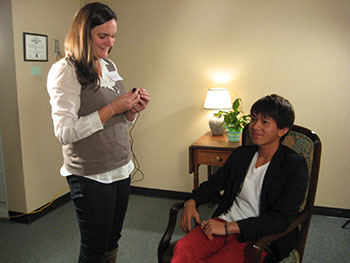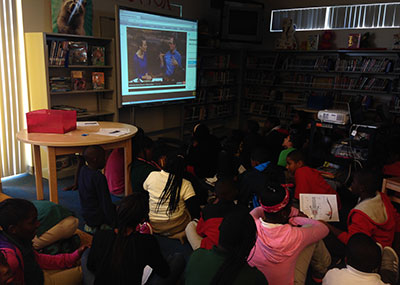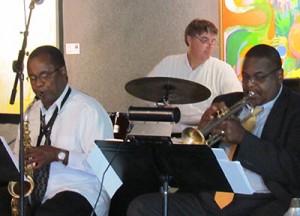Young Historians, Living Histories- Today’s Stop: Honolulu, HI!
Special thanks to Paula Lee, Smithsonian Affiliations intern, for this guest post. This is the third of a five-part blog series she is writing as part of the Young Historians, Living Histories (YHLH) collaboration with the Asian Pacific American Center and our Affiliate network.
 As we travel west to hear from our Affiliates at Pacific Aviation Museum Pearl Harbor (Honolulu, HI) we take flight almost literally, with those who once navigated overseas when aerial travel was a rare and exciting introduction to history. Shauna Tonkin, Director of Education at the Pacific Aviation Museum Pearl Harbor, connects us with Curtis Joe, immediate nephew of Chinese-American aviator and stunt pilot, Tom Gunn and Pan Am Japanese-American flight attendants, Mae Takahashi and Aileen Sodetani.
As we travel west to hear from our Affiliates at Pacific Aviation Museum Pearl Harbor (Honolulu, HI) we take flight almost literally, with those who once navigated overseas when aerial travel was a rare and exciting introduction to history. Shauna Tonkin, Director of Education at the Pacific Aviation Museum Pearl Harbor, connects us with Curtis Joe, immediate nephew of Chinese-American aviator and stunt pilot, Tom Gunn and Pan Am Japanese-American flight attendants, Mae Takahashi and Aileen Sodetani.
Tonkin partnered with Chris Facuri, Digital Media Teacher at Aliamanu Middle School, enabling the oral histories collected and edited throughout the school year to be incorporated into students’ curriculum. Participating students in the class took a field trip to visit the museum to meet Joe, Sodetani and Takahashi, where the entire group received a historical tour before sitting down for interviews. The two flight attendants live locally in Honolulu while Joe flew out from San Francisco to be a part of this project. All were very appreciative and realized the value of sharing the experiences that they’ve endured with younger generations. In response, the interactions with the pioneers made the experiences and stories come alive for the students studying them, activating their interests and courage to solicit knowledgeable questions.
Ford Island, where the museum is located is in the middle of Pearl Harbor, Honolulu, HI. On December 7, 1941, Japanese aircraft led a surprise attack initiating World War II. This led to a hard time for both Americans and Asian Americans, because the following year over 150,000 Japanese were ordered into internment camps although 62% of them were American citizens.
“The program served to be education, dynamic and responsive due to the nature of its interactive learning environment” observed by cooperating teacher Chris Facuri. Sparking the curiosity and interests of the youth was an important experience for Tonkin as she empathized with the difficulties of 1st generation children and their journey towards finding homage and respect for their culture while adapting to American influence. Tonkin emphasizes that this collaboration has “instilled a greater appreciation for diversity and culture of the Asian American Pacific experience. The oral histories collected barely scratched the surface.” She said, revealing her excitement towards starting new projects.

Students capture footage of Curtis’ interaction with youth of YHLH during a field trip tour to Pacific Aviation Museum


























